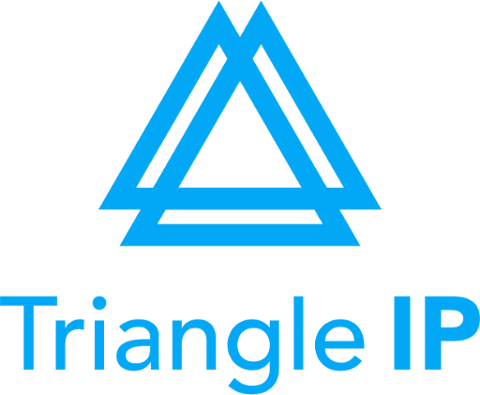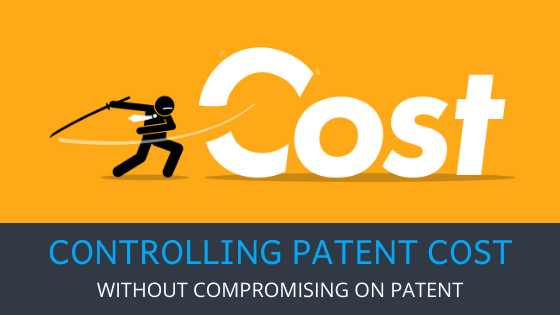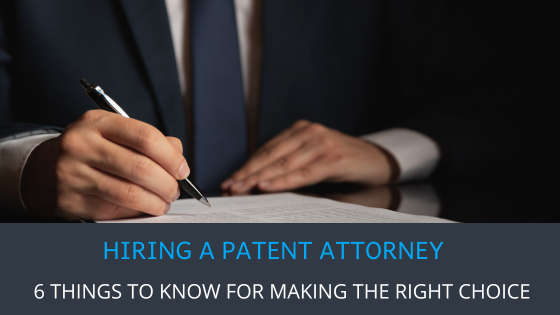Filing a patent application has long been known as the best protection for an invention, but it has become extremely expensive. Some of the costs are unavoidable to have the best chance for an issued application. Balancing these costs with the need for quality can be achieved by leveraging tools discussed in assessing idea management solutions. Other costs might seem like they are required as well, but they can actually be limited or even avoided, saving you considerable money when protecting your innovation.
Seek Out Problems First, then Innovate with Something New
There is always a need to solve a vexing problem in a unique way. But, how do you know that your innovation is unique? If your idea cannot be found in the market or after a little searching, it might be novel. To ensure uniqueness and avoid infringement, delve into strategies for effective patent filing. And you might consider filing a patent application. The technical process of confirming novelty is to perform a “patentability” search of the “prior art” but it is difficult to be sure. Prior art is just anything published earlier than the priority date of your patent filing. Patents take 18 months or more to publish so a patent search may not find an earlier filing in quickly evolving areas.
The patent search is also invaluable because it can uncover competitor patents before your design solidifies to allow for designing around to avoid later infringement suits when your product is released. Search firms will take your description and search for anything similar so you can be sure to have something unique. The identification of similar patented solutions is an early and low-cost warning of your market competition. With advance notice, your commercial offering can be changed to improve your idea’s uniqueness without treading on another’s patent rights. Most patents have some way to design around them, especially if found early in your product development cycle.
When is the Right Time to File your Patent Application
Once you have your unique solution to the problem and understand the value with respect to what others have done, it is time to have your own patent application prepared. Navigating the complexities of global patenting requires understanding global patent portfolio strategies. You can file an application once your innovation is ready for patenting, but often your design is a moving target. Procrastination can be your worst enemy as it is a “race to the patent office” because the first to file will almost certainly have priority over a later filing.
Also, your own disclosure of the innovation prevents filing in most countries even though the U.S. has a one-year grace period. Hot areas buzzing with interest coincidentally have parallel development at different companies as thought converges on the best solution. The best practice is to file early and often as your design improves with any additional innovation. If you think the innovation will evolve, you might consider a serial set of provisional filings as things crystalize toward your commercial embodiment.
Reduce the Costs with Preparation Work
Once you have your unique solution to the problem and understand the value with respect to what others have done, it is time to gather information for your own patent application. Any details on the design (even if not completed or built) will help with the drafting. An innovation capture tool like the idea manager offered by Triangle IP allows describing the innovation and attaching any supporting information (e.g., photos, recordings, presentations, papers, CAD files, etc.). Gathering implementation details on the innovation along with a description of how your innovation solves a problem in a manner different from prior art attempts. Alternatives and sub-innovations are important too.
Often, inventors do not work alone. When gathering details on your innovation it is important to brainstorm with other inventors or colleagues. This collaboration can be done by sharing the invention disclosure form online with the idea manager or another tool. Any identified inventor is given access to the invention disclosure form to add their own thinking and documentation.
Typically, a patent attorney or agent (“patent prosecutor”) has to be found to write your application. Strategies for selecting counsel are described in this article. After digestion of the information uploaded a good patent prosecutor normally conducts an interview to ask for additional details and further clarification. More information you prepare in advance of the patent prosecutor getting involved will save legal fees.
Review the Drafts and Think Creatively
A good patent application knows what innovation is unique and describes the differences that create your value proposition. Corners should not be cut on the contents of your application. Your unique part of the product forms what is called “the heart of the innovation” and is part of each independent claim to define your rights. Describe in great detail how that heart would work and any alternatives that might have the same value proposition.
Almost every time a patent application is filed, the examiner will reject your claims. Having additional detail in the filing allows crafting fall-back positions for amending the claims to gain your issuance. A narrow claim can still block your competition if that is the only practical way to accomplish the innovation. A great patent has as much detail and alternatives as possible when it comes to the heart of the innovation.
Reducing Litigation Costs By Being Strategic
Half the problem with patent litigation is how much time needs to be spent trying to prove with documentation that your patent was in place before someone else’s alleged idea hit the market. You can anticipate this problem and its solution by filing as many complete drawings and concepts with the U.S. Patent Office as possible for basic filings and base designs.
Generally, the party who has the earliest history stands on the strongest ground legally, and that leads to a far higher success at summary judgments where the court literally stops a case from going further because your argument of ownership is so obvious.
Avoid disputes with competing ideas by securing an early review that includes competing concepts and images in a decisive determination. Patent legal review can be just the basic preparation for patent filing success or it can also include the additional work in making sure no one else had the same idea prior, or very similar.
The few dollars spent as you develop the application could save you 10 times the cost in litigation that you end up losing because you never had a win in the first place.
Insurance is not a dumb idea either. As a preventative step, you can take out a patent insurance policy that covers defense of your patent up to a specific level of cost, which can also include settlement or judgment financial risks as well. That insurance plan can end up being your safety net financially to the extent you have to fend off a patent attack or pursue enforcement of your approved patent.
If you do have to litigate, stay on top of the proceedings and your legal representation with weekly meetings and status checks. Lawyers billing for work versus retainer charge all kinds of activities by the hour, but if your status checks reign in activities approved, then the billing can’t pad in unknown expenses so easily. This, in turn, cuts down on your legal costs over the duration of the litigation by avoiding charges you have no responsibility for in the first place.
Finally, not every lawsuit has to end in a trial and 50/50 chance of winning a judgment. You could salvage a patent loss or major legal cost by finding a way to settle and still hold onto some of the value of your invention and holding. Compromise has built and sustained more than one company and inventor by combining forces in cooperation versus direct fighting. Settlements shut down lawsuits permanently, stop the cost bleeding for continuing, and may very well be cheaper in the end than a full-blown fight to the end.
Spread Your Costs With Teamwork Help
If you have a great idea that really can work and be successful as a patent, why not bring in partners who can help bear the cost of the application process and potential enforcement costs? There are plenty of investor partner potentials who can find a profitable path to get on board and join your venture. Where this is possible, the overall cost to you for bringing your idea to patent can be reduced significantly in exchange for a share of the success and related licensing revenue stream. Not everyone makes a great partner, but it’s an option definitely worth considering.
Don’t Cut Costs Just for the Sake of Money or You Will Pay
Trying to save money on patent approval or enforcement just for the sake of the financial impact alone is poor planning. Don’t do it. The fact is, not paying for the critical review and legal costs to create or enforce a patent almost always ends up costing more in the long run. If you are going to seek savings in your patent project, you do need to make sure every step is part of your overall strategy towards your patent success. Again, some costs are worth the trouble when measured against the overall gain or loss in total.
In Closing, Don’t Expect Things to Get Cheaper On Their Own
The simple fact is, the patent protection world is not going to become more affordable anytime soon. There is simply too much demand for invention protection with too few qualified patent prosecutors. As a result, most providers are going to continue to charge high costs at a premium over the rest of the legal market. The greatest control you have is to be prepared and avoid wasted effort. In the beginning stages, you can make a significant difference in reducing costs while pursuing an uncompromising patent to protect your innovation.





